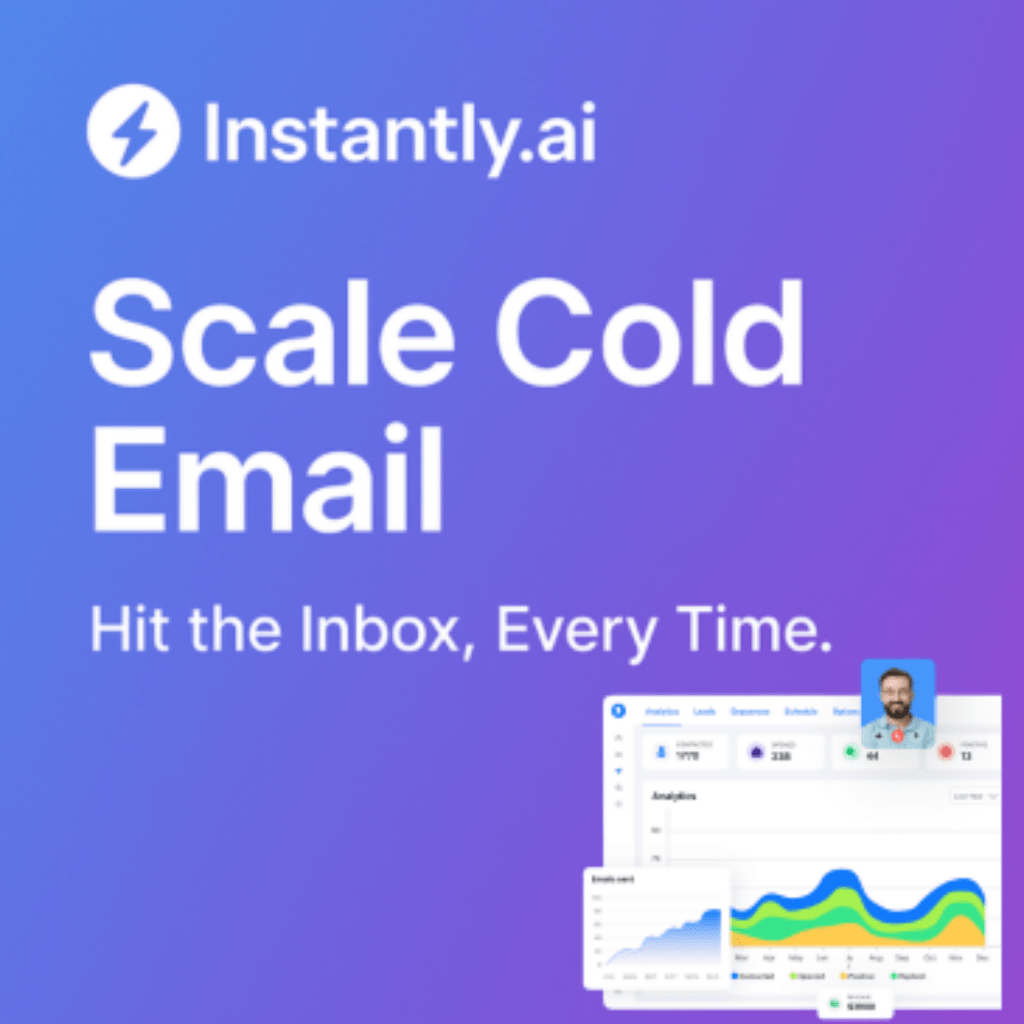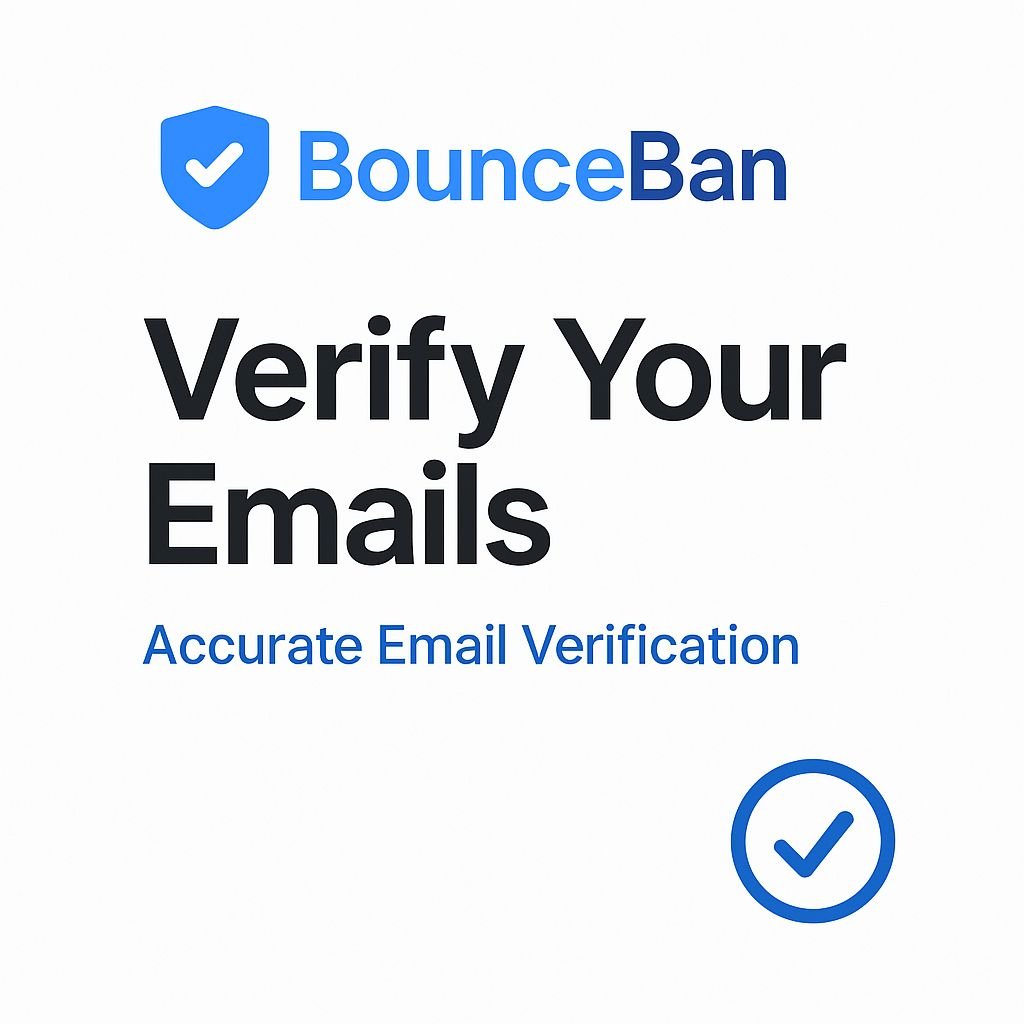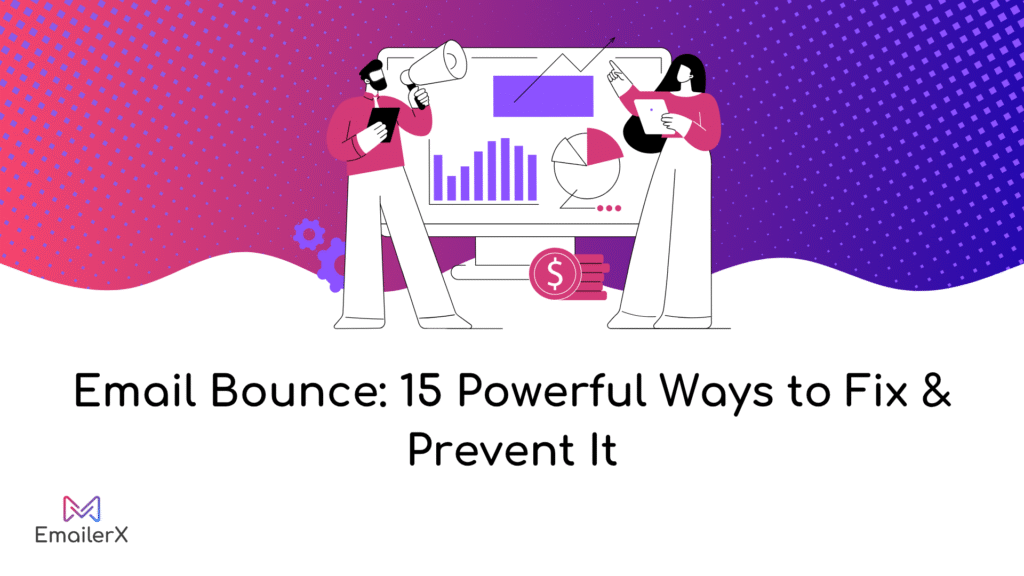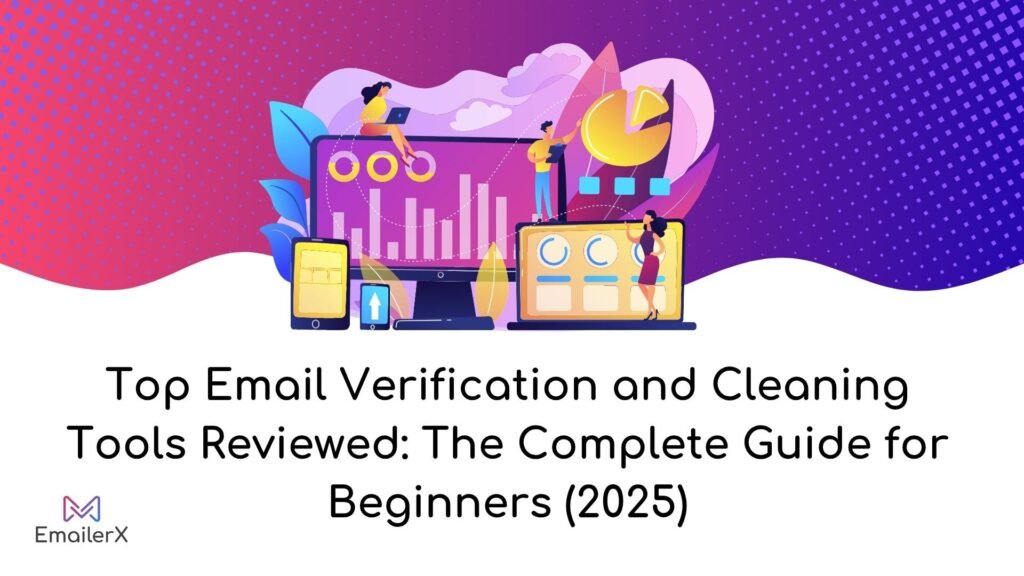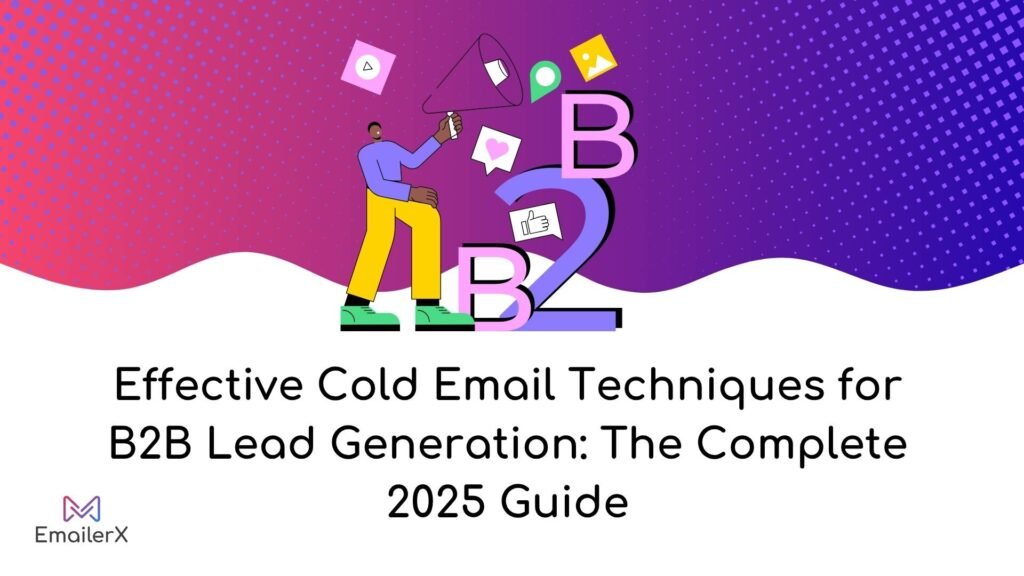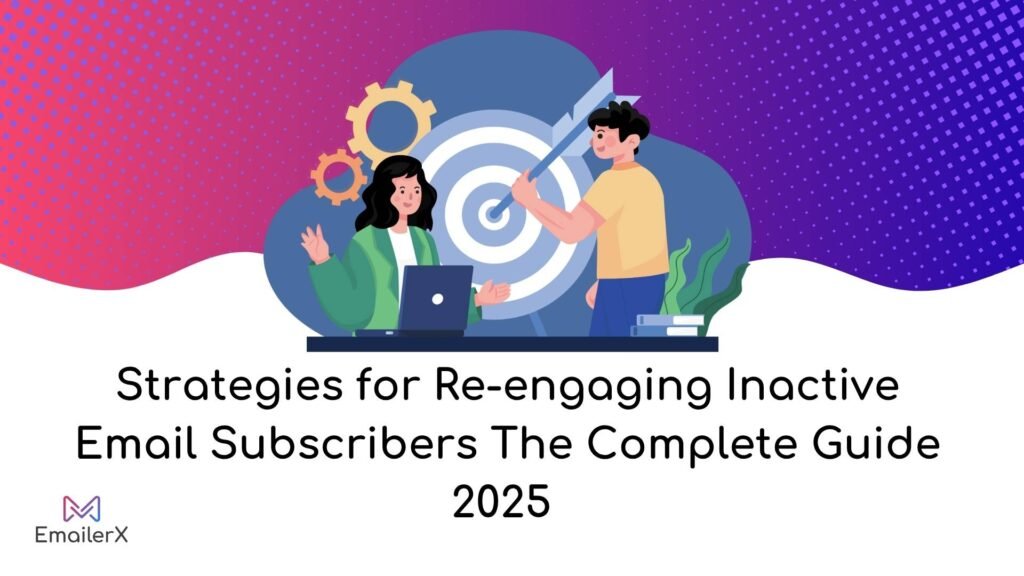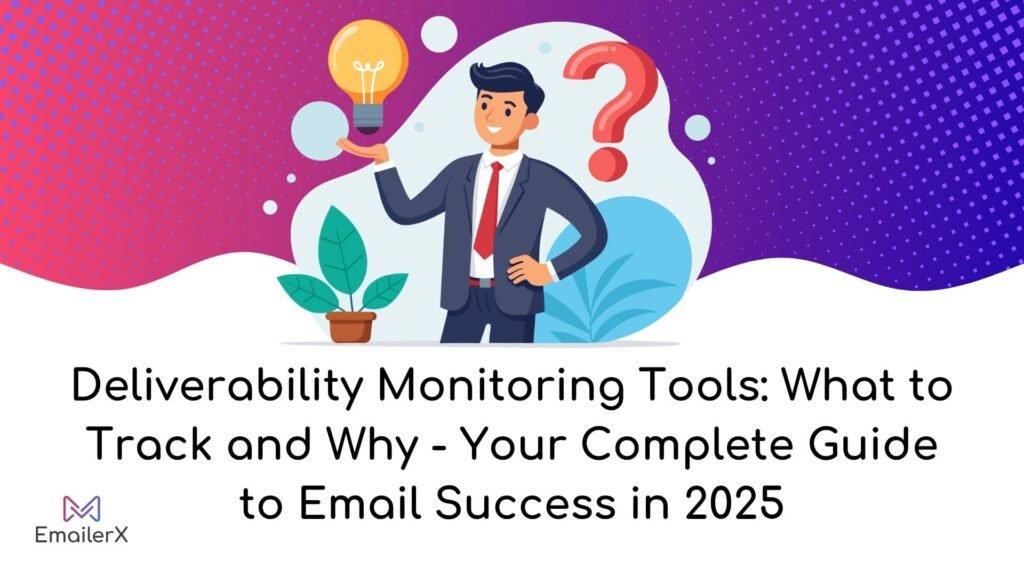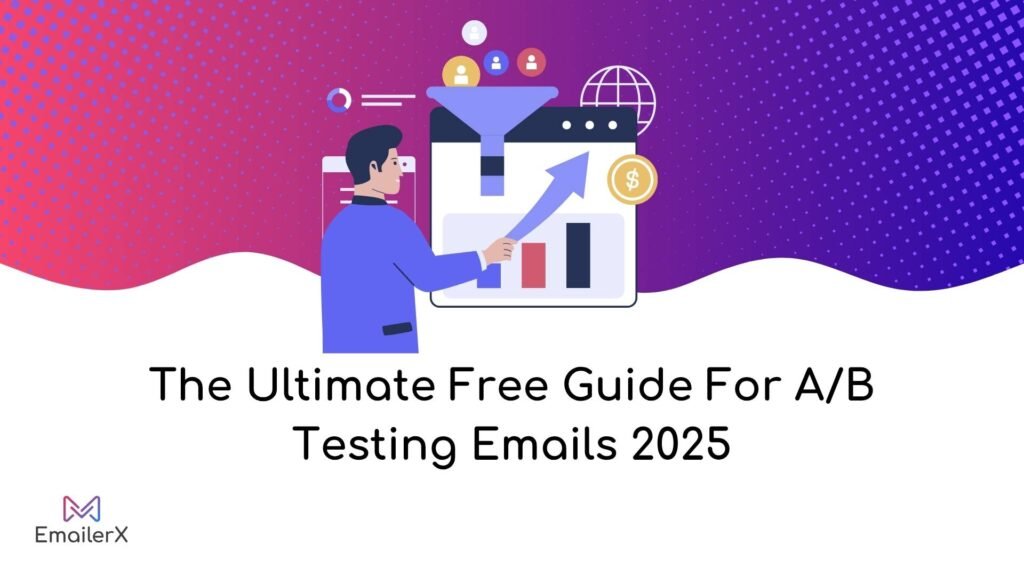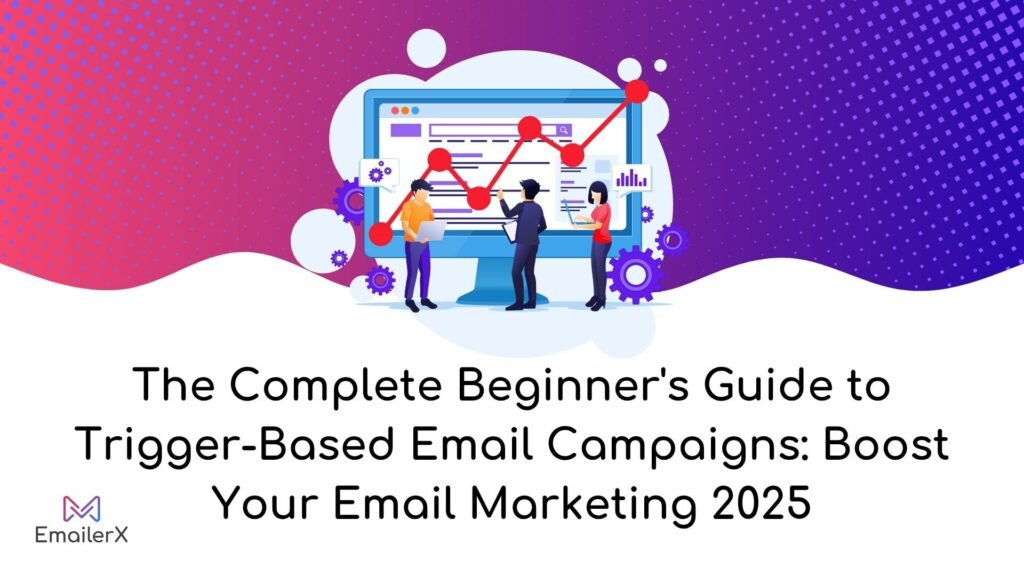Table of Contents
ToggleIntroduction
In today’s digital marketing landscape, learning how to create an email list remains one of the most valuable investments for your business.
With an ROI of $36 for every $1 spent, email marketing continues to outperform other channels by a significant margin. Whether you’re just starting out or looking to improve your existing strategy, creating an email list that converts is critical to your marketing success in 2025.
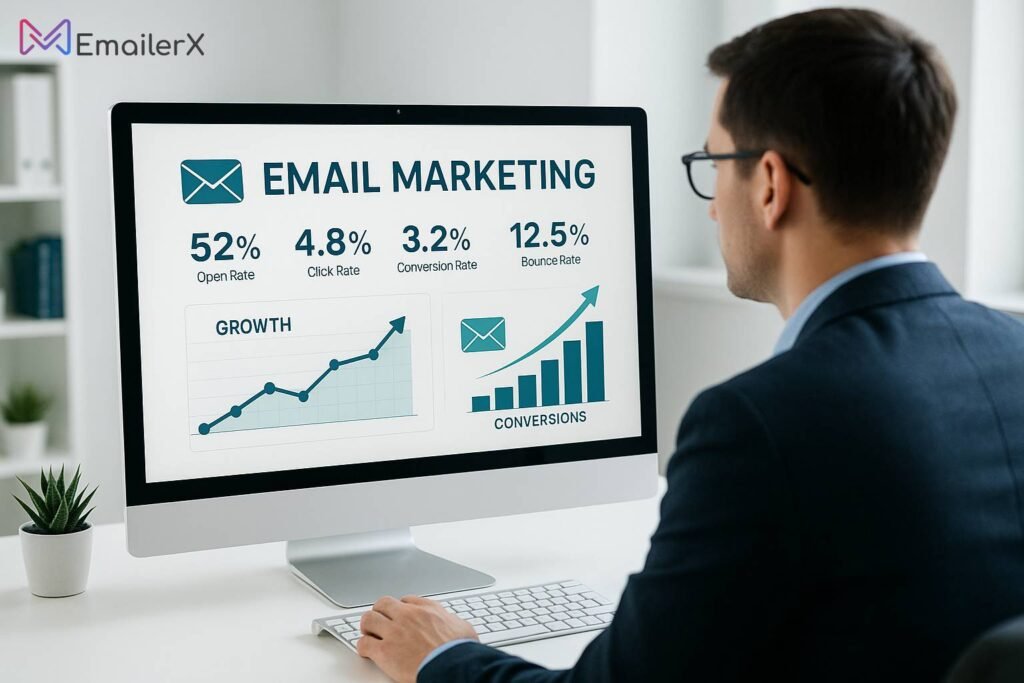
Unlike social media followers or search engine rankings that can vanish overnight with algorithm changes, your email list is an asset you own completely. This comprehensive guide will walk you through exactly how to create an email list from scratch, nurture it effectively, and leverage it for sustainable business growth.
Ready to build a high-converting email marketing machine? Let’s dive into the strategies that top-performing brands are using to create email lists that drive real business results.
Read to know more about What is Email Marketing & How to Do It Right in 2025
Understanding Email List Fundamentals
What is an Email List and Why It Matters in 2025
An email list is a collection of email addresses gathered from people who have given permission to receive communications from you. But it’s much more than just a database it’s a direct line to potential customers who have explicitly shown interest in your brand.
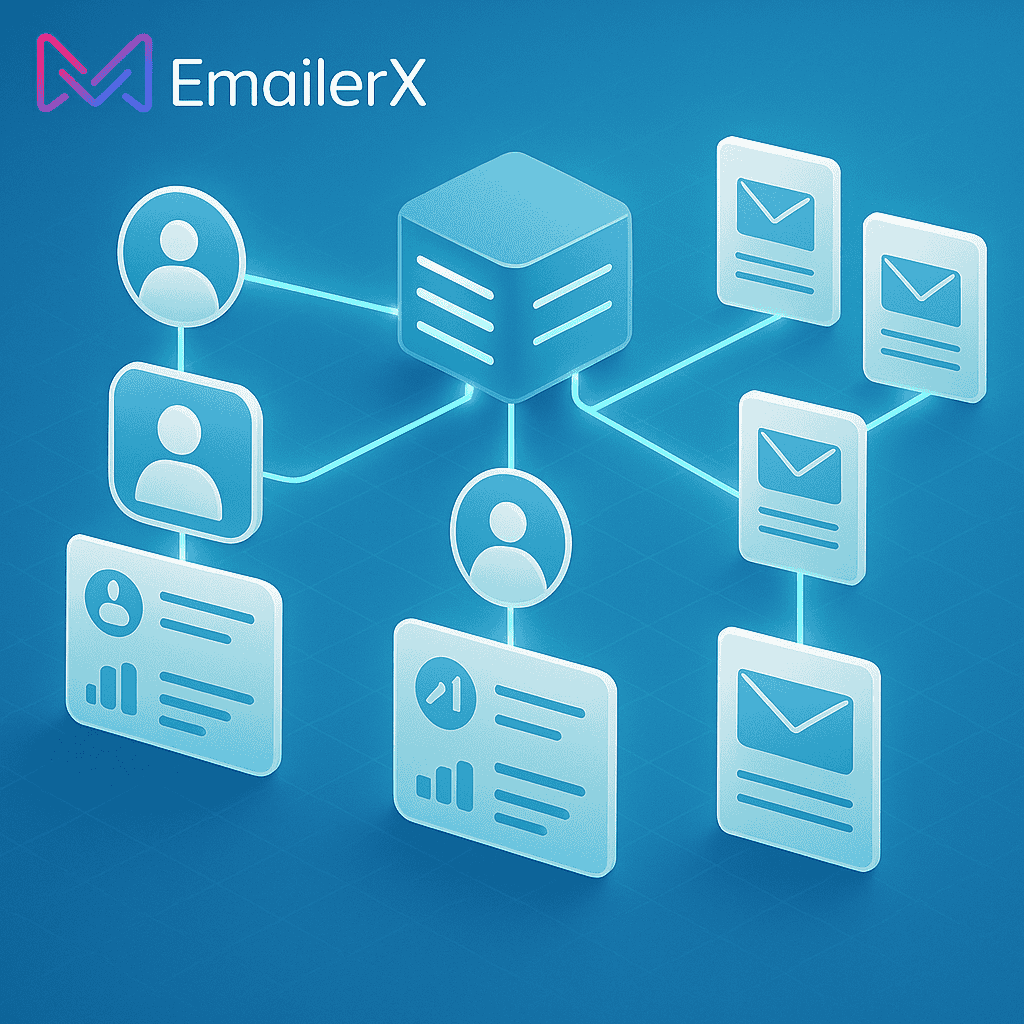
Even in 2025, with so many new marketing channels around, email is still producing great results.
- Average email marketing ROI: $36 for every $1 spent
- Email users worldwide: 4.6 billion (projected)
- Percentage of consumers who check email daily: 89%
The business case for learning how to create an email list has never been stronger. While social media keeps shrinking your organic reach, email still lets you reach people directly in their inbox with no filters.
Types of Email Lists Worth Building
Not all email lists are created equal. Understanding the different types of emails list structures can help you create more targeted and effective marketing campaigns:
- Segmented lists: Grouped by demographics, behaviors, or preferences
- Transactional subscriber lists: Focused on purchase-related communications
- Community-based lists: Built around shared interests or values
- Re-engagement lists: Targeting inactive subscribers
The most successful businesses often maintain multiple different emails lists to ensure maximum relevance and engagement across their customer base.
Setting Up Your Email Infrastructure
Choosing the Right Email Marketing Platform
Before you start creating an email list, you need to select the right platform to manage your subscribers and campaigns. Here are the top considerations when evaluating email marketing software:
- Business size and scalability: Will the platform grow with your list?
- Automation capabilities: What triggered emails can you set up?
- Integration with your tech stack: Does it work with your CRM, e-commerce platform, etc.?
- Analytics and reporting: What insights can you gather about performance?
- Pricing structure: Is it affordable as your list grows?
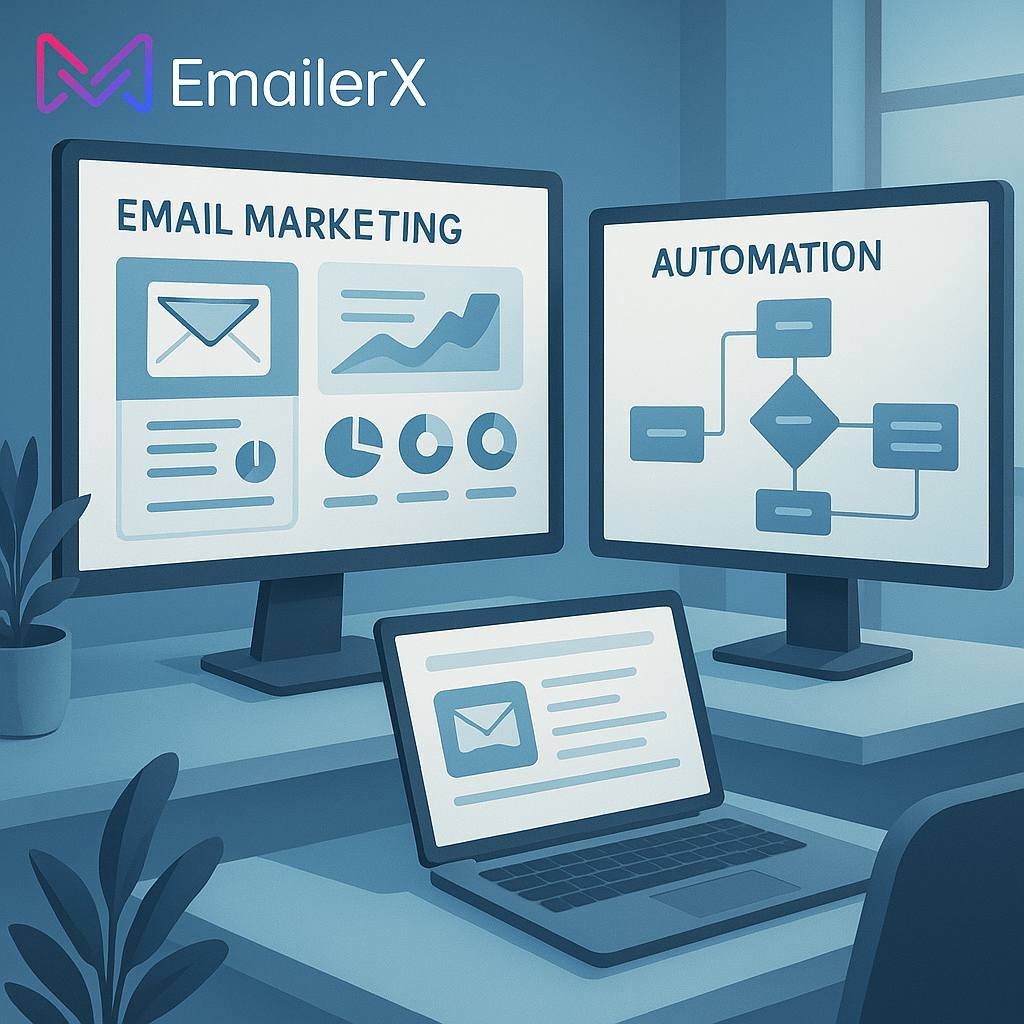
Top email marketing platforms worth considering in 2025:
- ConvertKit – Best for content creators and bloggers (Try ConvertKit free for 14 days)
- Klaviyo – Ideal for e-commerce businesses ( Get started with Klaviyo)
- ActiveCampaign – Perfect for advanced automation needs ( ActiveCampaign free trial)
- MailerLite – Budget-friendly option with robust features ( Try MailerLite)
- HubSpot – Comprehensive marketing solution ( HubSpot free tools)
These platforms offer varying levels of complexity and pricing, so choose one that aligns with your technical comfort level and budget.
Domain and Email Configuration Best Practices
To build trust and improve deliverability when you create an email list, consider these technical setup recommendations:
- Purchase an email domain that matches your brand (avoid free email services)
- Set up proper authentication protocols (DKIM, SPF, DMARC)
- Consider buying domain and email together for seamless integration
- Test email deliverability before sending to your entire list
Many businesses make the mistake of using free email providers, which can harm deliverability rates. Instead, buy email domain name services from reputable providers to ensure professional communications and better inbox placement.
(Get a professional domain and email hosting with Bluehost)
High-Converting Opt-in Strategies
Psychological Triggers That Drive Subscriptions
Understanding the psychology behind what makes people subscribe is crucial when learning how to create an email list that grows rapidly.
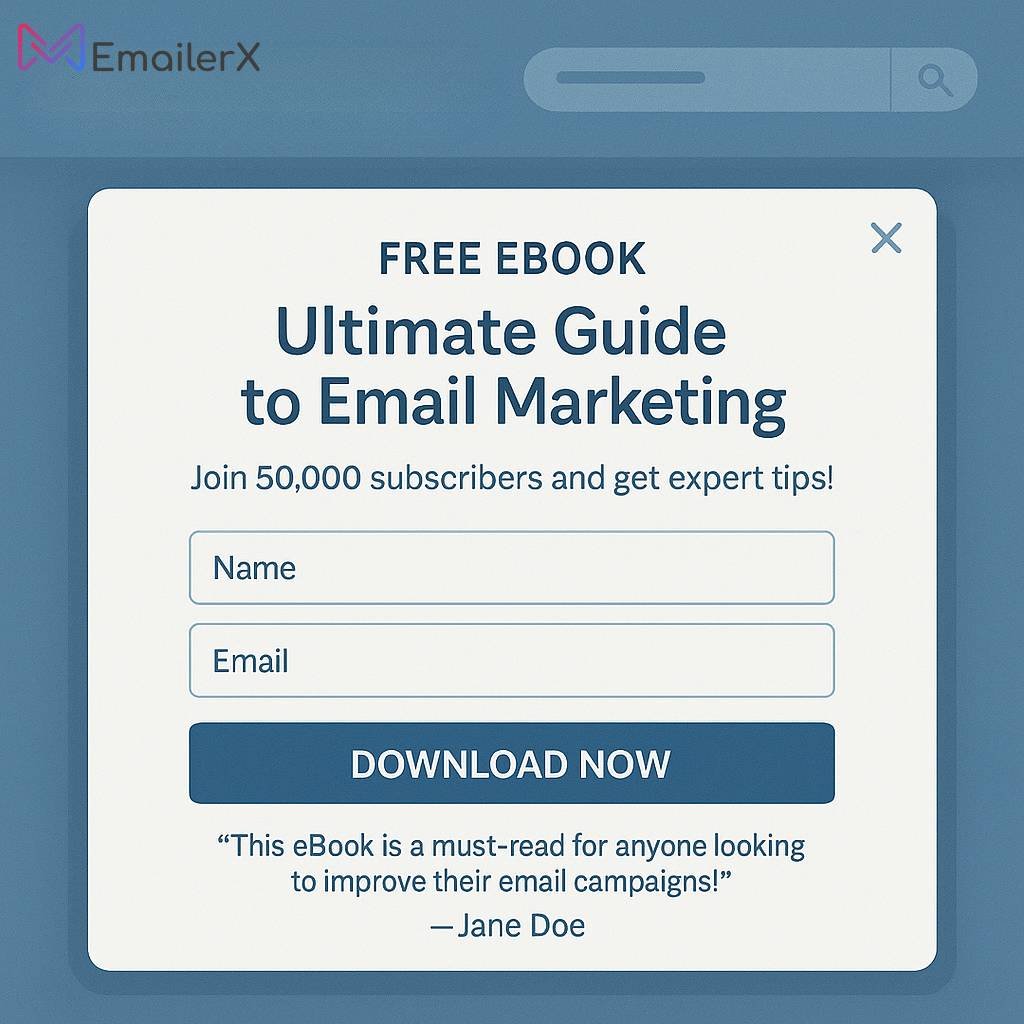
The most effective opt-in strategies leverage these psychological principles:
- Reciprocity: Offering valuable free content (lead magnets) in exchange for email addresses
- Scarcity: Limited-time offers or exclusive access
- Social proof: Showcasing subscriber counts or testimonials
- Authority: Demonstrating expertise in your field
- Fear of Missing Out (FOMO): Highlighting what they’ll miss without subscribing
Research shows that opt-in forms that incorporate these psychological triggers can see conversion rates up to 600% higher than generic “Subscribe to our newsletter” messaging.
Creating Irresistible Lead Magnets
A lead magnet is a valuable free resource offered in exchange for an email address. When you’re working on how to create an email mailing list, effective lead magnets can dramatically accelerate your growth.
Top-performing lead magnet types by industry:
| Industry | Lead Magnet Type | Average Conversion Rate |
| B2B | Industry reports & white papers | 8-12% |
| E-commerce | Discount codes & free shipping | 5-15% |
| Health & Fitness | Meal plans & workout guides | 12-20% |
| Personal Finance | Calculators & templates | 10-18% |
| Education | Mini-courses & checklists | 15-25% |
When creating an email magnet, focus on solving a specific, immediate problem for your audience. The more targeted your offer, the higher your conversion rate will be.
( Create professional lead magnets with Canva Pro)
Strategic Form Placement for Maximum Conversions
Where and how you place your email sign-up forms can significantly impact your list-building results. Based on heatmap analysis and conversion data, here are the highest-converting placements when you’re figuring out how to create an email list:
- Exit-intent popups: 2-4% average conversion rate
- Welcome mats (full-screen overlays): 3-5% average conversion rate
- Floating bars (top or bottom of screen): 1-3% average conversion rate
- Inline forms within high-value content: 0.5-2% average conversion rate
- Feature boxes at the top of key landing pages: 1-3% average conversion rate
For mobile users, who make up over 60% of web traffic in 2025, consider these additional placement strategies:
- Slide-in forms instead of full-screen popups
- Multi-step forms that feel less overwhelming
- SMS opt-in integration for an omnichannel approach
(Try OptinMonster for high-converting forms)
Welcome and Onboarding Sequences
Crafting the Perfect Welcome Email
The welcome email is vital it creates the first impression and guides your whole relationship with new subscribers. Subscribers who receive an effective welcome email show 33% more long-term brand engagement.
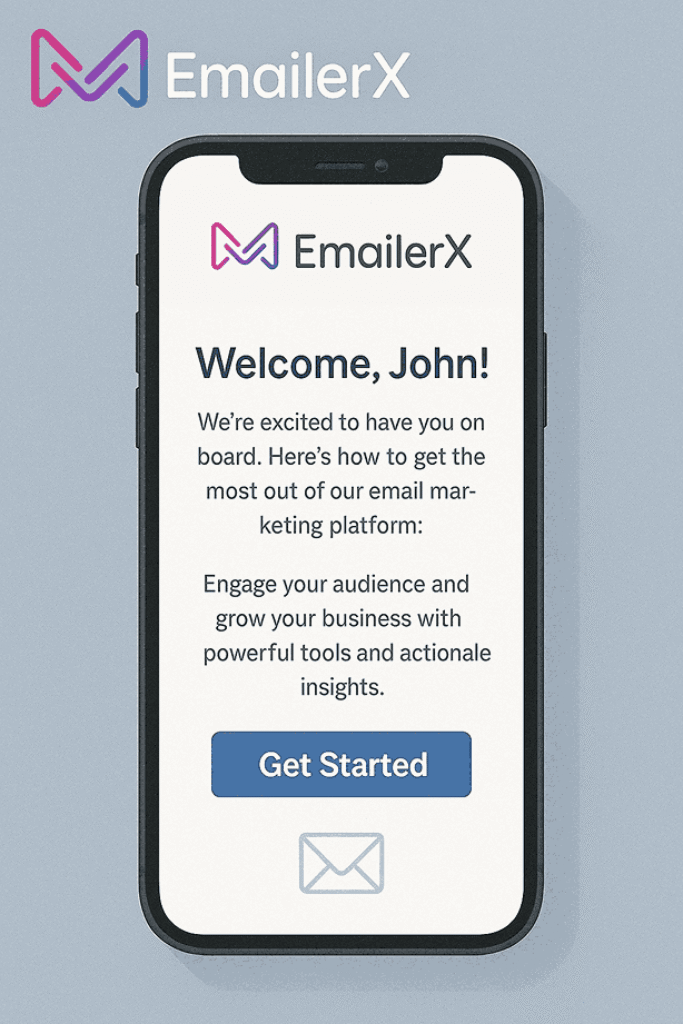
Key elements of a high-converting welcome email:
- Strong subject line: 60-70 characters that spark curiosity
- Personal greeting: Using the subscriber’s name increases open rates by 26%
- Clear value proposition: Remind them why they subscribed
- Setting expectations: Content types and frequency
- Quick win: Provide immediate value to reinforce their decision
- Next steps: Clear guidance on what to do next
- Brand personality: Show your unique voice and style
When designing your welcome email template, focus on simplicity and clarity. The goal is to build rapport and guide new subscribers toward their first positive experience with your brand.
( Get professional welcome email templates with Flodesk )
Building a Multi-Message Onboarding Sequence
A single welcome email isn’t enough—research shows that a strategic email automation sequence can increase engagement by up to 90%. Here’s how to structure an effective onboarding sequence when creating an email list:
Day 1: Welcome email
- First impression and immediate value delivery
Day 2-3: Educational content
- Solving a key problem for your subscribers
Day 4-5: Social proof
- Case studies or testimonials that build credibility
Day 6-7: Deeper connection
- Your origin story or brand values
Day 8-10: First conversion opportunity
- Soft sell or trial offer
This sequence structure works across industries because it follows the natural relationship-building process: value first, trust second, offer third.
( Set up automated sequences with ActiveCampaign)
E-commerce-Specific List Building
Abandoned Cart Recovery Mastery
For e-commerce businesses, abandoned cart emails represent a massive opportunity for both list building and revenue recovery. The average cart abandonment rate hovers around 70%, but effective abandoned cart email strategies can recover 10-15% of those sales.
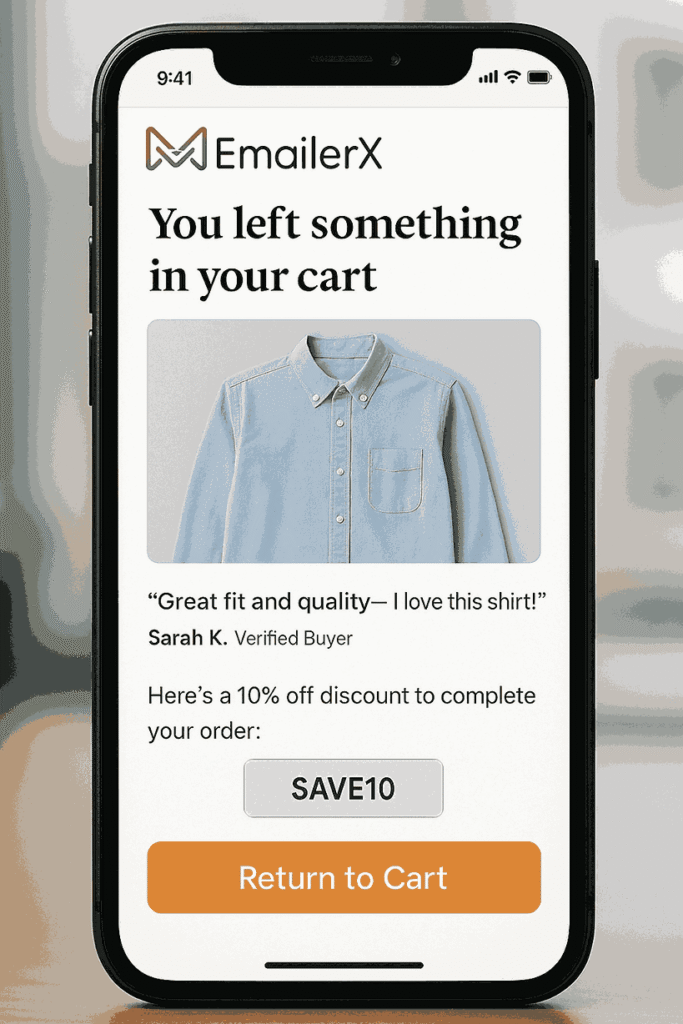
Best practices for abandoned cart email success:
- Timing: Send the first recovery email within 1 hour of abandonment
- Sequence: Use a 3-email series (1 hour, 24 hours, 72 hours after abandonment)
- Subject lines: Create urgency without being pushy
- Visual reminders: Include images of abandoned products
- Social proof: Add reviews for abandoned items
- Clear CTA: Make it easy to return to their cart
- Possible incentives: Consider escalating offers in follow-up emails
Many e-commerce platforms include basic abandoned cart functionality, but specialized tools can help you create more sophisticated abandoned cart emails examples that convert at higher rates.
( Recover more sales with Omnisend )
Post-Purchase Sequence Optimization
The moment after purchase is perfect for deepening the relationship and setting up future sales. Your post purchase email flow should accomplish multiple goals:
- Order confirmation: Reinforce the buying decision
- Anticipation building: Get them excited about receiving their purchase
- Education: Help them get maximum value from their purchase
- Cross-sell/upsell: Recommend complementary products
- Review request: Generate social proof for future customers
- Loyalty invitation: Encourage repeat purchases
A well-crafted post-purchase sequence can increase customer lifetime value by 33% or more, making it a critical component when learning how to create an email list that drives sustainable revenue.
( Optimize your post-purchase experience with Klaviyo )
Segmentation Strategies That Scale
Beyond Basic Demographics: Behavioral Segmentation
As your list grows, segmentation becomes increasingly important. Segmented email campaigns generate 30% more opens and 50% more clicks than unsegmented campaigns.
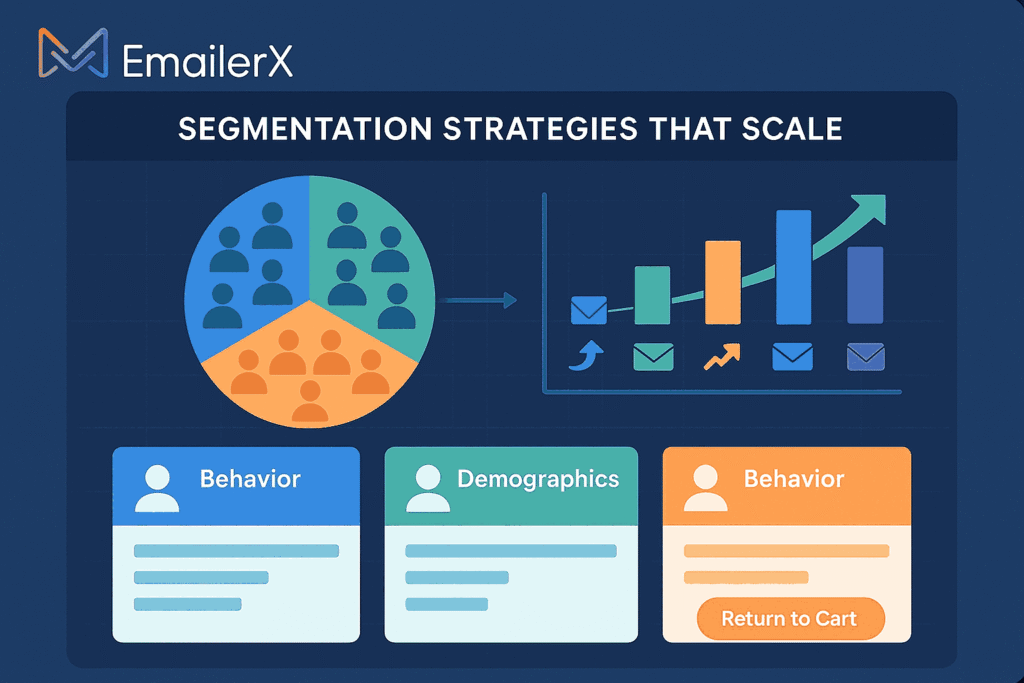
When you’re working on how to create an email list that delivers exceptional results, focus on these advanced segmentation approaches:
- Engagement-based segments: Active, inactive, highly engaged
- Purchase history segments: First-time buyers, repeat customers, big spenders
- Content interaction segments: Based on which topics they engage with most
- Customer journey stage segments: Prospect, new customer, loyal advocate
The most sophisticated email marketers are now using predictive segmentation powered by AI to anticipate needs and behaviors before they occur.
( Advanced segmentation with Drip )
Implementing Dynamic Segmentation
Static segments become outdated quickly as subscriber behaviors evolve. In contrast, dynamic segmentation automatically refreshes subscriber groups based on real-time actions and attributes.
Examples of dynamic segmentation in action:
- Automatically moving subscribers to a “high-value prospect” segment after visiting pricing pages three times
- Shifting customers to a “win-back” segment after 60 days of no engagement
- Promoting subscribers to a “VIP” segment after cumulative purchases exceed a certain threshold
This approach ensures that your messaging always matches the current relationship state, significantly improving relevance and conversion rates.
( Implement dynamic segments with ActiveCampaign )
Mobile Optimization for List Growth
Mobile-First Form Design
With over 60% of emails now opened on mobile devices, optimizing for mobile isn’t optional when you’re learning how to create an email list in 2025. Mobile-first form design principles include:
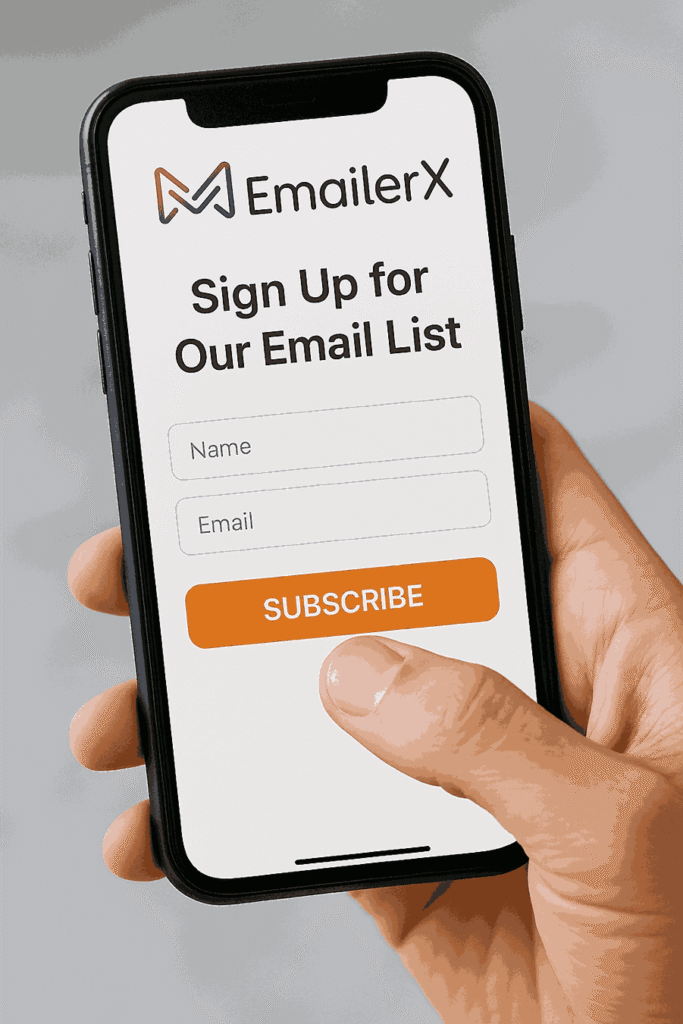
- Single-column layouts: Easier to navigate on small screens
- Large touch targets: At least 44×44 pixels for buttons
- Minimal field requirements: Each additional field reduces conversions by ~25%
- Autofill compatibility: Leverage browser autofill capabilities
- Visual progress indicators: For multi-step forms
- Touch-friendly design: No tiny checkboxes or radio buttons
Testing your forms across multiple devices and screen sizes is crucial, as poor mobile experiences can reduce opt-in rates by up to 70%.
( Create mobile-optimized forms with Thrive Leads )
SMS Integration for Omnichannel List Building
Combining email and SMS collection can significantly accelerate your list growth. SMS messages have a 98% open rate compared to email’s average of 20-30%, making them a powerful complement to your email marketing strategy.
Best practices for SMS and email integration:
- Offer SMS as an additional channel option during email sign-up
- Use SMS for time-sensitive offers and email for longer-form content
- Create unified campaigns that leverage both channels’ strengths
- Ensure compliance with additional SMS regulations (TCPA in the US)
- Consider tools that handle both email and SMS marketing for seamless integration
( Try integrated email and SMS marketing with Omnisend )
Measuring Success Beyond Subscriber Count
Key Performance Indicators for List Quality
While subscriber count is the most visible metric, it’s far from the most important when you’re focusing on how to create an email list that delivers business results.
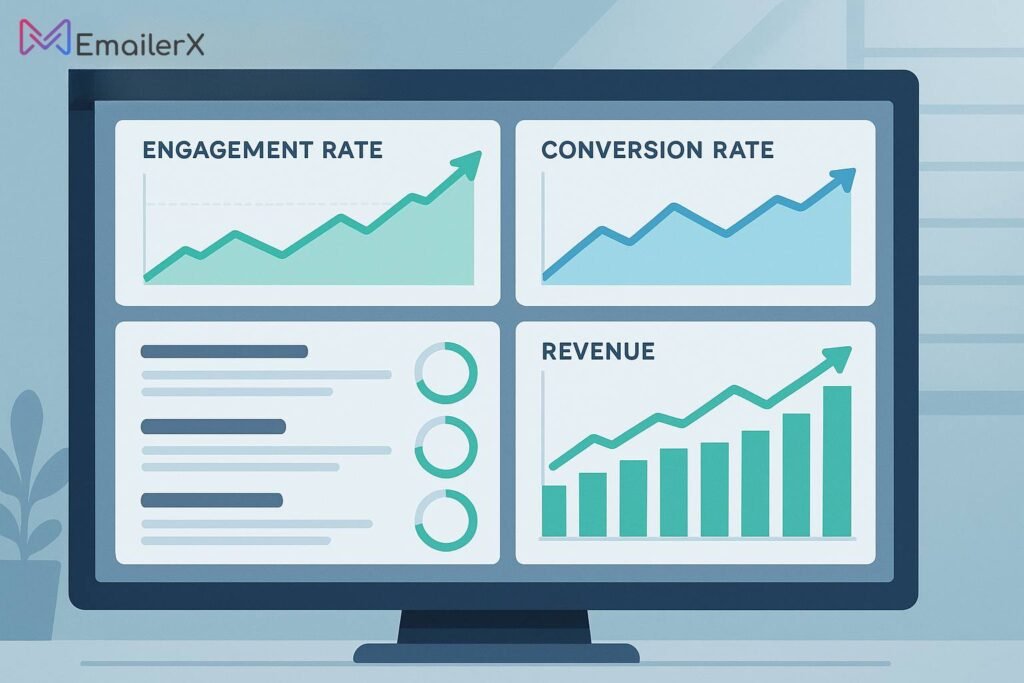
Track these email marketing metrics for a more comprehensive view:
- Growth rate: New subscribers minus unsubscribes over time
- Engagement rate: Opens and clicks as percentage of delivered emails
- Conversion rate: Actions taken after clicking through
- List health rate: Percentage of active subscribers (opened or clicked in last 90 days)
- Revenue per subscriber: Total email revenue divided by subscriber count
- Deliverability rate: Emails delivered vs. bounced
- Unsubscribe rate: Keep below industry benchmarks (typically 0.1-0.5%)
Creating custom dashboards that track these metrics over time will help you identify trends and optimize your list-building strategy.
( Track comprehensive email analytics with Sendgrid )
Advanced Analytics Implementation
Going beyond basic metrics can reveal deeper insights about your list performance. Consider implementing these advanced analytics approaches:
- Attribution modeling: Understanding which list-building tactics drive revenue
- Cohort analysis: Comparing performance of subscribers acquired during different periods
- Customer lifetime value prediction: Identifying highest potential subscribers early
- Engagement scoring: Creating a composite metric of subscriber quality
- Churn prediction: Identifying at-risk subscribers before they unsubscribe
These sophisticated analytics approaches will help you refine your understanding of what makes your list valuable and where to focus your growth efforts.
( Implement advanced analytics with Mixpanel)
Privacy and Compliance in List Building
GDPR, CCPA, and Beyond: Global Compliance Guide
When learning how to create an email list, compliance with privacy regulations is non-negotiable. The landscape continues to evolve, with more regions implementing strict data protection laws. Key regulations affecting email marketing include:
- GDPR (European Union): Requires explicit consent, right to access/delete data
- CCPA/CPRA (California): Gives consumers rights over their personal information
- CASL (Canada): One of the strictest anti-spam laws globally
- PECR (UK): Specific electronic communication regulations
- LGPD (Brazil): Similar to GDPR but with Brazilian-specific requirements
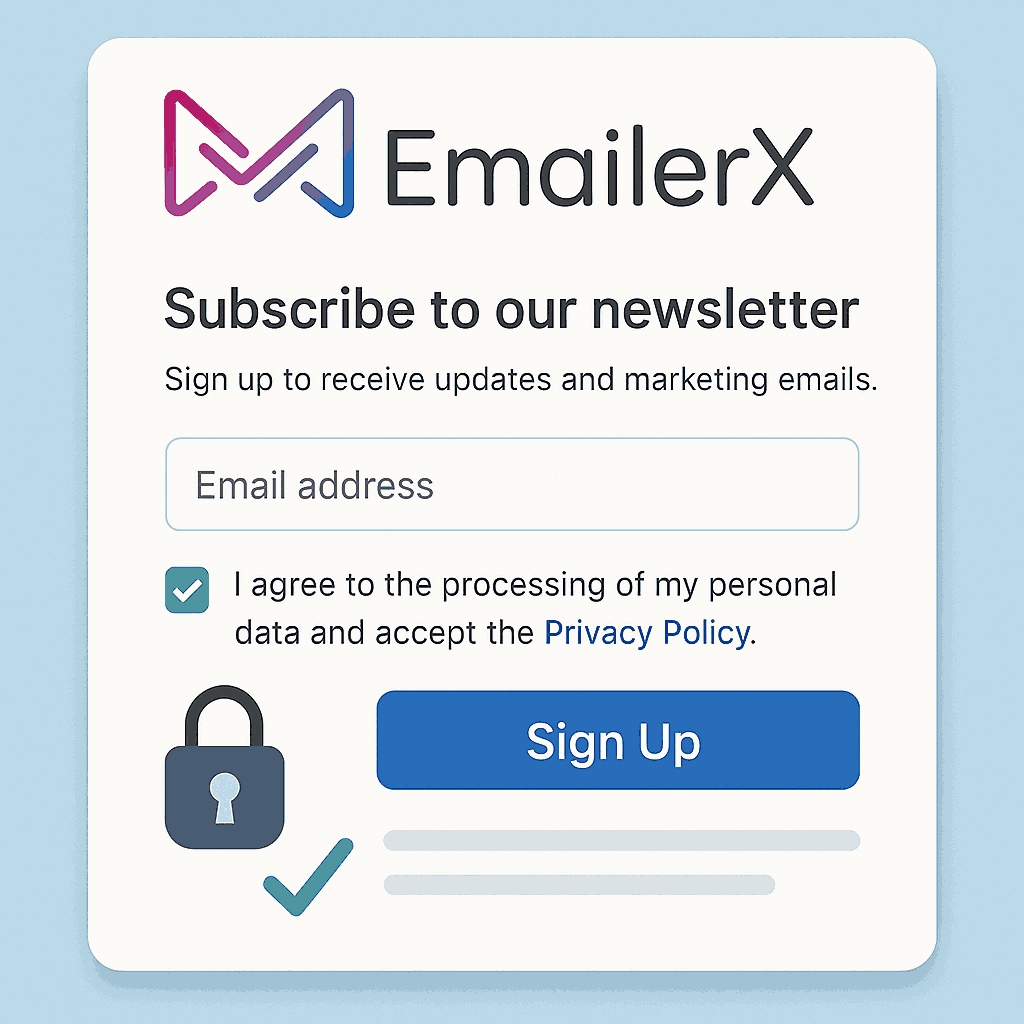
Implementing these best practices will help ensure compliance across jurisdictions:
- Use double opt-in for all new subscribers
- Maintain clear records of consent
- Make unsubscribing simple and immediate
- Implement data retention policies
- Provide privacy notices at collection points
- Regularly audit and update your compliance measures
Non-compliance can result in significant fines up to 4% of global revenue under GDPR making this a business-critical consideration.
( Simplify compliance with iubenda )
Privacy-First List Building Strategies
Building trust around data privacy can actually improve your list growth. Email deliverability and engagement both benefit from a privacy-focused approach:
- Transparent data usage policies: Clearly explain how you’ll use their information
- Progressive profiling: Collect additional data over time instead of all at once
- Preference centers: Let subscribers control what they receive and how often
- Data minimization: Only collect information you’ll actually use
- Privacy as a selling point: Promote your responsible data practices as a benefit
Brands that emphasize privacy in their marketing often see higher conversion rates and greater subscriber loyalty.
( Implement subscriber preference centers with MailerLite )
AI and Automation in List Building
Predictive Acquisition Strategies
AI is revolutionizing how businesses create email lists by helping identify and target high-value prospects before they even subscribe. Consider these cutting-edge approaches:
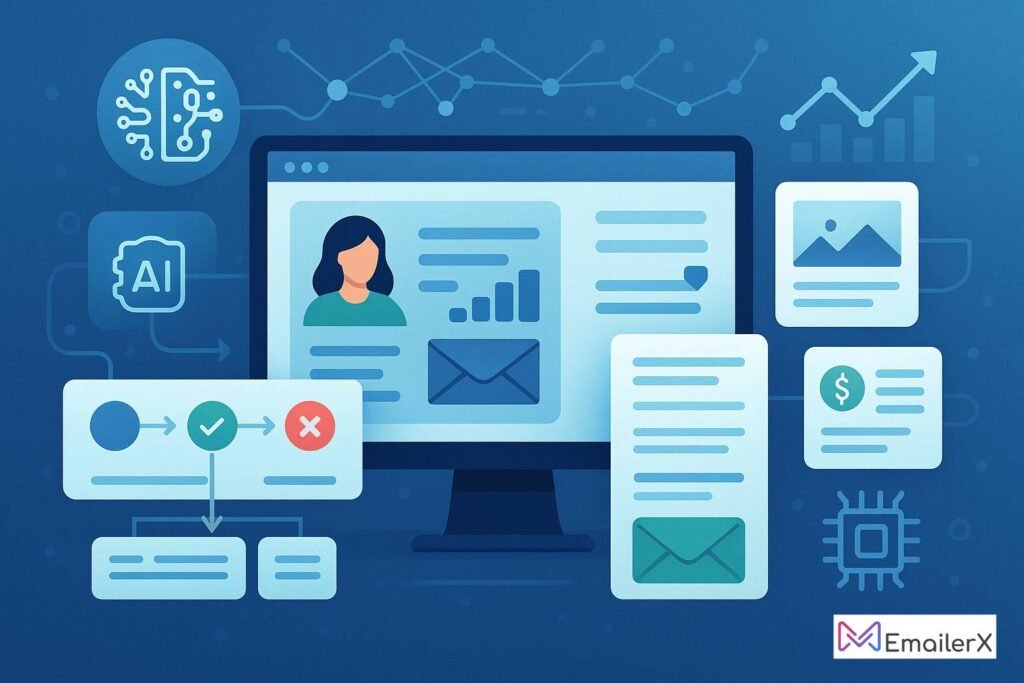
- Look-alike audience development: Finding prospects who match your best subscribers
- Intent prediction: Identifying users showing purchase signals
- Content recommendation engines: Personalizing lead magnets based on behavior
- Optimal timing detection: Identifying when prospects are most likely to convert
- Multi-touch attribution: Understanding which touchpoints drive subscriptions
These AI-powered strategies can improve subscription rates by 30-50% while simultaneously increasing the quality of new subscribers.
( Leverage AI for subscriber acquisition with Seventh Sense)
Conversational AI for List Growth
Interactive, conversation-driven list building is gaining traction as consumers seek more personalized experiences. These technologies are showing promising results:
- Chatbot opt-ins: Interactive conversations that lead to subscription
- Quiz funnels: Personality or assessment quizzes that collect emails
- Voice-enabled subscriptions: Integration with voice assistants and devices
- Interactive calculators: Tools that deliver value while collecting information
- AI-driven content recommendations: Personalized lead magnets based on interests
Conversational approaches often convert at 3-5x the rate of traditional static forms because they create a more engaging, value-driven experience.
( Build interactive quizzes with TryInteract )
Retention and Re-engagement
List Churn Prevention Tactics
Subscriber churn people unsubscribing or becoming inactive is inevitable, but you can minimize it with proactive strategies. When working on how to create an email list for the long term, focus on these retention approaches:
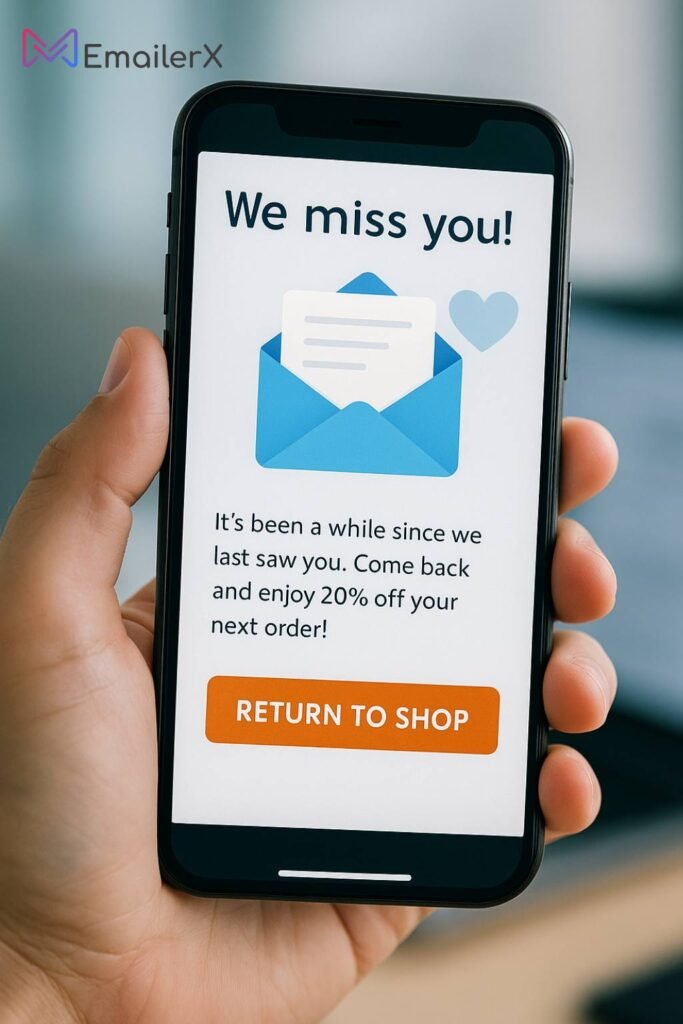
- Value reinforcement: Regularly remind subscribers of benefits
- Engagement monitoring: Identify decreasing engagement before complete disengagement
- Content refreshment: Regularly update your approach based on engagement data
- Preference update prompts: Periodically ask subscribers to update their interests
- Surprise and delight: Occasional unexpected bonuses for loyal subscribers
Reducing your churn rate by even 5% can have a dramatic impact on the long-term value of your email marketing program.
( Reduce list churn with Customer.io )
Winning Back Inactive Subscribers
Even with the best retention strategies, some subscribers will become inactive. A strategic re-engagement campaign can recover 5-15% of these subscribers when properly executed.
Effective re-engagement sequence structure:
- Attention-grabbing subject line: “We miss you” or “Is this goodbye?”
- Acknowledge the absence: Recognize they haven’t engaged recently
- Remind them of the value: Why they subscribed initially
- Incentivize re-engagement: Special offer or exclusive content
- Clear call-to-action: What specific action confirms they want to stay
- Easy unsubscribe option: Allow clean list removal if truly disinterested
- Follow-up for non-responders: Final attempt before removal
For those who don’t respond after multiple attempts, removing them from your active list can actually improve overall deliverability and engagement metrics.
( Automate re-engagement campaigns with GetResponse )
Industry-Specific List Building Strategies
B2B List Building Approaches
Building an email list in the B2B space requires specialized tactics that address longer sales cycles and multiple decision-makers:
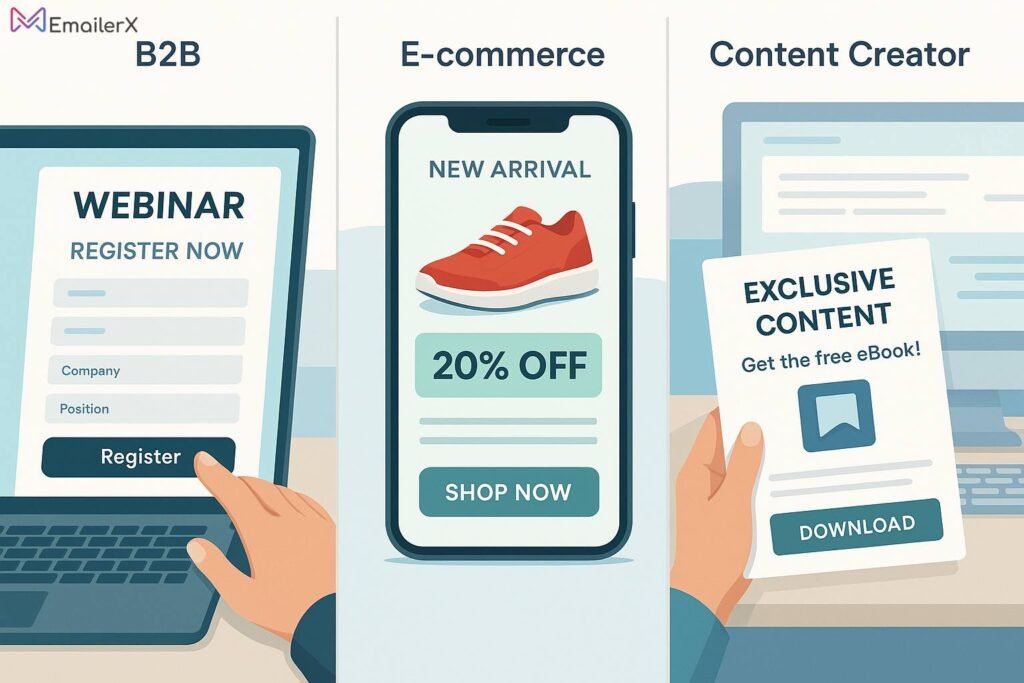
- Content-driven acquisition: Gated industry reports, templates, and tools
- Webinar registration: High-value educational events requiring email signup
- Account-based list building: Targeting multiple contacts within priority accounts
- LinkedIn integration: Synchronized content and email strategies
- Multi-channel nurturing: Coordinated touchpoints across email, retargeting, and social
The most effective B2B email lists segment by company size, industry, role, and buying stage to deliver hyper-relevant content.
( B2B email marketing with HubSpot )
DTC E-commerce List Building
Direct-to-consumer brands face unique challenges and opportunities when creating an email list. These specialized tactics drive exceptional results in the e-commerce space:
- First-purchase discount: Offering 10-15% off first orders in exchange for email signup
- Free shipping thresholds: Email signup to unlock free shipping
- Exclusive product access: Early or exclusive access to new releases
- Contest and giveaway entries: Product-focused competitions
- Post-purchase upsell sequences: Turning one-time buyers into collectors
For e-commerce brands, integrating your email marketing for ecommerce strategy with your product catalog and customer purchase history is essential for personalization.
Content Creator List Building
For bloggers, YouTubers, podcasters, and other content creators, your email list is your direct connection to your audience independent of platform algorithms. Focus on these creator-specific strategies:
- Content upgrades: Enhanced versions of free content (templates, checklists, etc.)
- Member-exclusive content: Subscriber-only articles, videos, or episodes
- Community access: Private discussion groups or forums
- Behind-the-scenes content: Insight into your creation process
- Early notification: First to know about new content or projects
Content creators often see the highest conversion rates with “content upgrades” that directly enhance the value of specific pieces of content. ( Creator-friendly email marketing with ConvertKit)
Conclusion: Your Email List Building Roadmap
Creating an email list that drives real business results isn’t about quick hacks or shortcuts it’s about building a valuable asset through consistent, strategic efforts. Here’s your implementation roadmap:
First 30 days:
- Select your email platform
- Set up proper domain authentication
- Create your first lead magnet
- Implement basic opt-in forms
- Develop a welcome sequence
Days 31-90:
- Add segmentation based on subscriber behavior
- Implement abandoned cart recovery (for e-commerce)
- Develop industry-specific acquisition tactics
- Set up basic analytics tracking
- Begin testing different opt-in placements
Days 91-180:
- Implement advanced segmentation
- Develop re-engagement campaigns
- Integrate mobile and SMS strategies
- Expand your automation sequences
- Begin A/B testing key elements
Remember that email list building is a marathon, not a sprint. Focus on delivering consistent value, respecting subscriber preferences, and continually optimizing your approach based on data. Ready to start building your email list today?
Try our recommended email marketing platform and take the first step toward email marketing success!
Frequently Asked Questions (FAQ’s)
How many subscribers do you need to start email marketing?
You can start email marketing with just one subscriber! There’s no minimum threshold before you can begin sending valuable content and offers. In fact, starting small allows you to test and refine your approach before scaling up. Focus on quality over quantity in the beginning stages of creating an email list.
What are the best ways to grow an email list fast?
The fastest ethical ways to grow your list include:
• Creating a high-value lead magnet
• Implementing exit-intent popups
• Running targeted social media campaigns
• Adding signup forms to high-traffic pages
• Creating viral giveaways or contests
• Guest posting on relevant publications with list-building CTAs
• Speaking at virtual or in-person events
Avoid purchasing lists or using deceptive tactics, as these will harm your deliverability and brand reputation in the long run.
Is it legal to buy email lists?
While not technically illegal in all jurisdictions, purchasing email lists violates the terms of service of all reputable email service providers and runs afoul of regulations like GDPR, which require explicit consent. Additionally, purchased lists perform poorly, damage your sender reputation, and often result in spam complaints. Always focus on creating an email list through legitimate opt-in methods.
How often should you send emails to your list?
The best sending frequency varies based on your industry, your audience’s expectations, and the value you deliver. Studies show:
• Most B2C companies send 2-5 emails per month
• B2B companies typically send 1-2 emails per month
• Media and entertainment brands may send 8-12 emails per month
The best approach is to set clear expectations during signup and then test different frequencies with segments of your list to find the optimal balance.
What’s a good open rate for email marketing?
Average open rates vary significantly by industry, but generally:
• 15-25% is considered average across industries
• 25-35% is good
• 35%+ is excellent
In 2025, with Apple’s Mail Privacy Protection affecting open rate accuracy, it’s increasingly important to focus on click rates and conversion metrics instead of or alongside open rates.
How do I prevent my emails from going to spam?
To improve deliverability and avoid spam folders:
• Use double opt-in to verify subscriber intent
• Maintain list hygiene by removing inactive subscribers
• Authenticate your domain with SPF, DKIM, and DMARC
• Avoid spam trigger words in subject lines
• Maintain a good text-to-image ratio
• Regularly monitor engagement metrics
• Use a reputable ESP (Email Service Provider)
• Include an easy unsubscribe option
Consistently sending valuable, engaging content to people who want to receive it is the best long-term strategy for avoiding spam filters.


